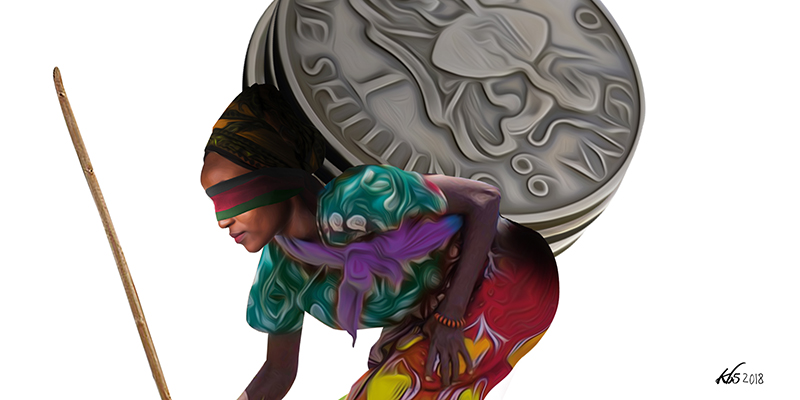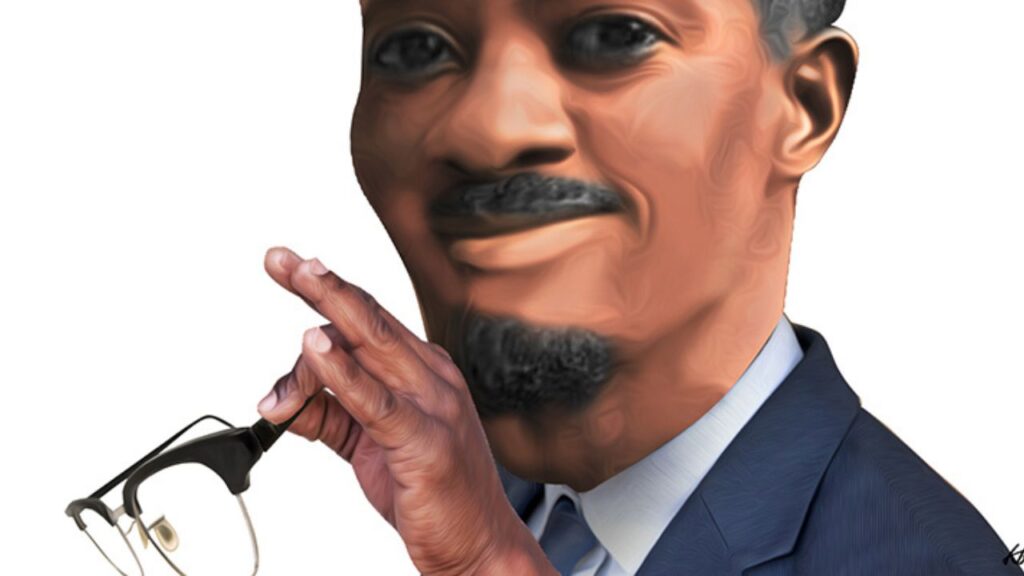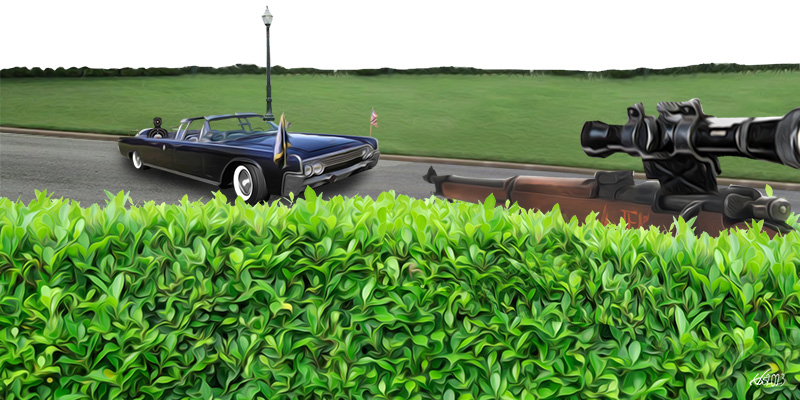In March 2008, Kenya was reeling from the shock of post-election violence. Over 1,000 people were dead, hundreds of thousands were displaced, women were traumatised by rape and some were even pregnant from those rapes, and some men were victims of genital mutilation in the name of circumcision.
When the weapons were down and the burning had stopped after the February 2008 accord, the priority of the leaders would have been to heal the country, seek justice and reparations, and restructure the whole society to uproot the endemic inequality and tribalism that were at the root of the political crisis. But in the midst of such trauma and need for healing and reconciliation, what did President Mwai Kibaki do? He set up Brand Kenya.
The gazette notice establishing Brand Kenya paid lip service to promoting patriotism, but its main interest was not really whether Kenya was a country Kenyans would be proud of. Its primary preoccupation was that Kenya remained a country in which foreigners could invest or relax.
The government’s target audience was not the people of Kenya but foreigners. The focus on business was roughly similar to George W. Bush’s call on American citizens to express their patriotism after 9/11 by going shopping, except for a small difference. Unlike Bush whose appeal was to his fellow Americans, the Kibaki-Raila coalition sought to appeal to foreigners to invest or spend their money in Kenya.
The establishment of Brand Kenya is just one of the more egregious examples of Kenya’s history of governments more preoccupied with pleasing foreigners than with serving its own citizens. Every time Kenyans are in distress, the main worry of the government is whether the investors will notice anything, and how soon we can cover up our human weaknesses so as not to scare them away.
Hegemony
This idea of Kenya as a country for investors and tourists is normalised through social institutions like the media and education. Indeed, a few weeks before, on January 7, 2008, at the height of the chaos, Peter Kiragu would express concern about Kenya’s image in an article in the Star, making no mention about the injustice and horror that Kenyans were experiencing.
The establishment of Brand Kenya is just one of the more egregious examples of Kenya’s history of governments more preoccupied with pleasing foreigners than with serving its own citizens. Every time Kenyans are in distress, the main worry of the government is whether the investors will notice anything, and how soon we can cover up our human weaknesses so as not to scare them away.
Kiragu complained: “The 2007 elections have painted a bad image of Kenya, far from one which was created after the 2002 elections.” He expressed hope that foreigners would not think of us as a typical African country that cannot conduct elections properly, and concluded the article with this shockingly insensitive declaration: “The brand Kenya needs to be protected more than anything or anyone else.”
An interesting element that emerges from Kiragu’s article is Kenya’s notorious belief in its exceptionalism, which is in turn based on accepting the West’s racist disdain for Africa and expressing pride that Kenya is not a typical African country. Throughout the article, Kiragu talks of a Kenya that was doing well with tourism and export, and that had been the envy of other African countries, “many of which were in even more desperate shape than Kenya”. He contrasts Kenya to DR Congo, Somalia, Sudan and Côte d’Ivoire, distinguishing Kenya from the others as a country “best known for its unspoiled game parks, which attract hundreds of thousands of international visitors who want to see lions and elephants and other animals roaming free”.
One would wish that this was just one journalist writing a personal opinion, but unfortunately it isn’t. What Kiragu is voicing is the hegemonic definition of Kenya, if we think of hegemony in terms of the ideas of the ruling class that are diffused through social institutions such as religion, media and education.
Between the investor and the tourist
In Kiragu’s article, we also see a disturbing acceptance of the racist image of Africa that requires us to achieve two contradictory targets. These targets mirror the urban-rural dichotomy, the inequality in development, and worse, the ethnic distinctions between deserving “developed” and undeserving “backward” ethnic groups.
The rationale is that because Kenya must attract investors, it must work at meeting targets of “development” set by the West in the urban areas, while on the other hand, Kenya must continue to attract tourists, which it can do by offering resource-deprived regions as the image of an Africa untouched by Western civilisation, where wildlife “roam free”.
This dual and racist tension between the investor and the tourist permeates all Kenyan life and institutions. Since independence, the government has reserved the areas around the railway for “development,” and the areas further from the railway for tourism.
One institution in which this logic is evident is Brand Kenya. In the Brand Master Plan, a document that Brand Kenya commissioned Interbrand Sampson, a South African PR firm, to write, Brand Kenya prioritises people in the following descending order: foreign investors; foreign tourists; and Kenyan citizens. The master plan reduces our constitution into a selling point that could be exploited for the Kenyan “brand”.
The master plan is a shocking document to read because it uses the investor-tourist dichotomy in its description of Kenya. Indeed, the document has profiled Kenya as “an exotic destination that is surprisingly familiar, where people and nature live in harmony alongside ambitious economic developments”.
This description is disturbing because it rehashes the colonial anthropological discourses of the 19th century. For instance, being “exotic” and “surprisingly familiar” is an oxymoron typical of the European romantic period, because being exotic necessarily means being strange, and necessarily unfamiliar.
The brand document separates the people from the nation, and relegates us to a frozen past together with our natural environment. If there is any economic development, it is not part of our lives. We are just living “alongside”, meaning that the elite are promising investors that flesh and blood Kenyans will not interfere with their investments by being unruly, or being visible for that matter. Indeed, ecologist Mordecai Ogada often says that the tourism which Kenya markets is a tourism with wildlife and no people, which is why many of the photographs advertising tourism and wildlife do not show the pastoralists grazing their herds near the wildlife.
The brand document separates the people from the nation, and relegates us to a frozen past together with our natural environment. If there is any economic development, it is not part of our lives.
Even when the master plan considers the people, it is only as labour for capital. Any democratic claims are not for the Kenyan people to live in dignity, but for ensuring that Kenyans remain out of the way while businesspeople invest in the cities, and while tourists relax in the wild.
Likewise, the recently launched National Tourism Blueprint leaves no doubt about the stereotypical profiling of Africans, and particularly of the Maasai. The document contains a photo of a man in a Maasai shuka skipping while holding the hands of two white girls, with a caption that reads: “Enriching cultural encounters with friendly people and ancient tribes.”
After all the work done by theorists on Orientalism and “decolonising the mind”, references to Africans as “ancient tribes”, using 19th century anthropological tropes, are simply mindboggling.
Daily and institutional violence
The focus of Kenya’s consciousness on foreign affirmation would explain why Kenyans experience daily life and institutional and collective processes as a form of physical, moral, emotional and intellectual violence. The institutions are not for serving them, but for pleasing foreigners.
In electoral democracy, for instance, elections are often followed not with sympathy for Kenyans’ frustration with the ineptitude with which the process is handled. Rather, Kenyans are treated to expressions of irritation about the lengthy periods Kenyans take to complete the process of elections, which interrupt business in the country. Democracy is not for Kenyans to have a say in the governance of their country, but for the government to prove to the West that Kenya is an ideal business and tourism destination – because we can manage “civilised” ideals like democracy and elections, unlike other African countries.
Similarly, roads are not planned to serve poor Kenyans or to be used by ordinary Kenyans. As Patrick Gathara has said in different forums, roads are prioritised over the people who should use them. The poor are evicted to make way for roads, and the roads are so badly designed that they kill hundreds of pedestrians, fail to accommodate bus stops or bus lanes for commuters, and have no walkways or bicycle paths for users without cars.
Another example is healthcare where Vision 2030 and the Jubilee manifesto use tourism as the model for healthcare. The tourism framework for healthcare essentially leaves the cheaper treatment of communicable diseases in the realm of the public healthcare system, and reserves the more expensive treatment for non-communicable diseases, especially cancer, to private hospitals.
That is why the filling up the coffers of the National Hospital Insurance Fund (NHIF) is not the universal healthcare that the Big Four agenda makes it out to be. NHIF money will end up in private hospitals with the best equipment and specialists, which means a windfall for medical equipment manufacturers, pharmaceuticals and medical insurance companies. Meanwhile, government doctors fail to achieve the job satisfaction they went on strike for, and they watch as the government imports doctors from Cuba and pays them more than the local doctors.
In education, the same lack of care for Kenyan children applies. The shoddily written and launched curriculum includes pathways that are potentially discriminatory because they would allow schools to choose favourite or privileged children to pursue subjects that have better prospects of social mobility. Each time the Kenya Institute of Curriculum Development (KICD) officials discussed the document in public, the most common rationale for the curriculum change they cited was that the curriculum was what the business community wanted, and was following the trends in education abroad. And, no surprise, most of the theories on which the curriculum was tailored were up to 40-years-old and were almost all foreign.
Despite decades of major overhauls in political administration, the rationale of Kenya’s institutions has remained deeply colonial.
Starting afresh
Kenya achieved a great milestone when it ratified the progressive constitution in 2010. However, the institutions, their rationale and operational style remain firmly colonial and rabidly racist, which explains why Kenyan daily life is so violent.
Despite decades of major overhauls in political administration, the rationale of Kenya’s institutions has remained deeply colonial.
Calling our institutional culture colonial does not mean that our institutions have not changed over the past sixty years. Rather, it means that the colonial rationale is repeatedly and deliberately reinforced in the present day. Decade after decade, regime after regime, government institutions have wired themselves, built themselves, and reproduced policy documents to remain focused on the West, and to wipe Kenyans out of the picture. These institutional reinforcements would explain why the government seems to be meeting little institutional and collective resistance as it rolls back the political and social gains made with the new constitution.
Seeking to explain why political reforms in Kenya have never translated into the material improvement of Kenyans’ lives, Gathara wrote five years ago that Kenya had “tried everything except reform the patterns of thought that find their genesis in the attitudes and divisions of the half century of colonial rule that preceded them.”
Our biggest political problem is no longer our constitution. It’s our institutions.
We need to deconstruct, and probably destroy and rebuild, Kenyan public institutions. The few government documents I have interacted with, especially from the education and tourism sectors, are all riddled with racist tropes of Africans, and an obsession with Western approval so that we can earn Western money.
Kenyans will have to go through a national mental re-engineering that heals us of our inferiority complex and deals with our historical wounds, and then write an affirmation of dignity as human beings. Using that affirmation, professionals should write new major policy documents to cleanse them of their racist tropes, and to make the needs and aspirations of Kenyans paramount.
Such work will require a lot of brain work and will probably bring little glory. But if we do not spend time on understanding the ideas, attitudes and behaviour of Kenyan public institutions, the current government will reverse all the political gains we have made. And by 2022, Kenya will look curiously similar to the 1970s, when we were ruled by crony elites under a one-party system. We have to put our minds to work, and rewrite Kenyan policy documents and rebuild Kenyan institutions so that their primary reason for existence is to serve Kenyans.








